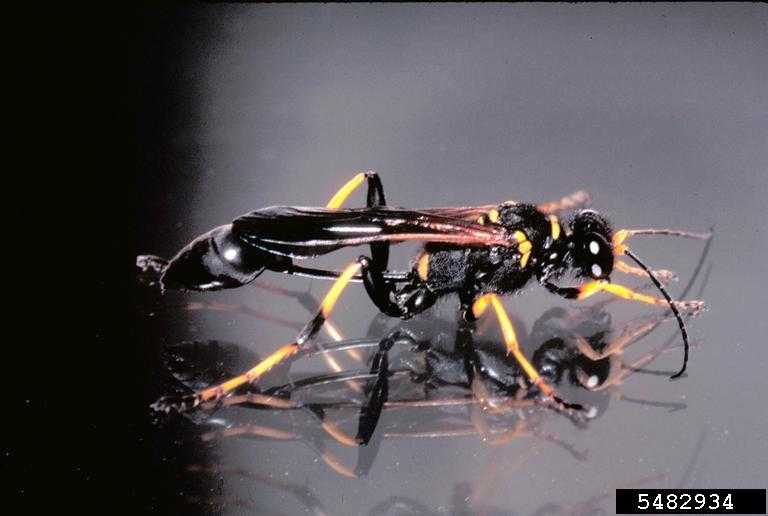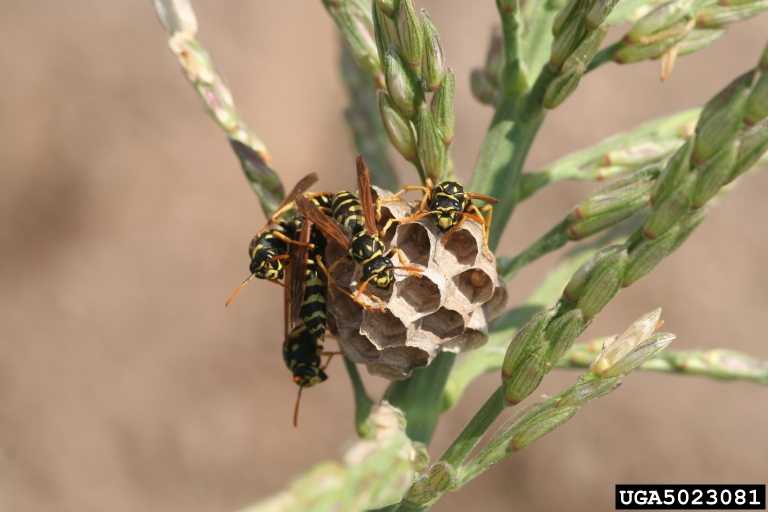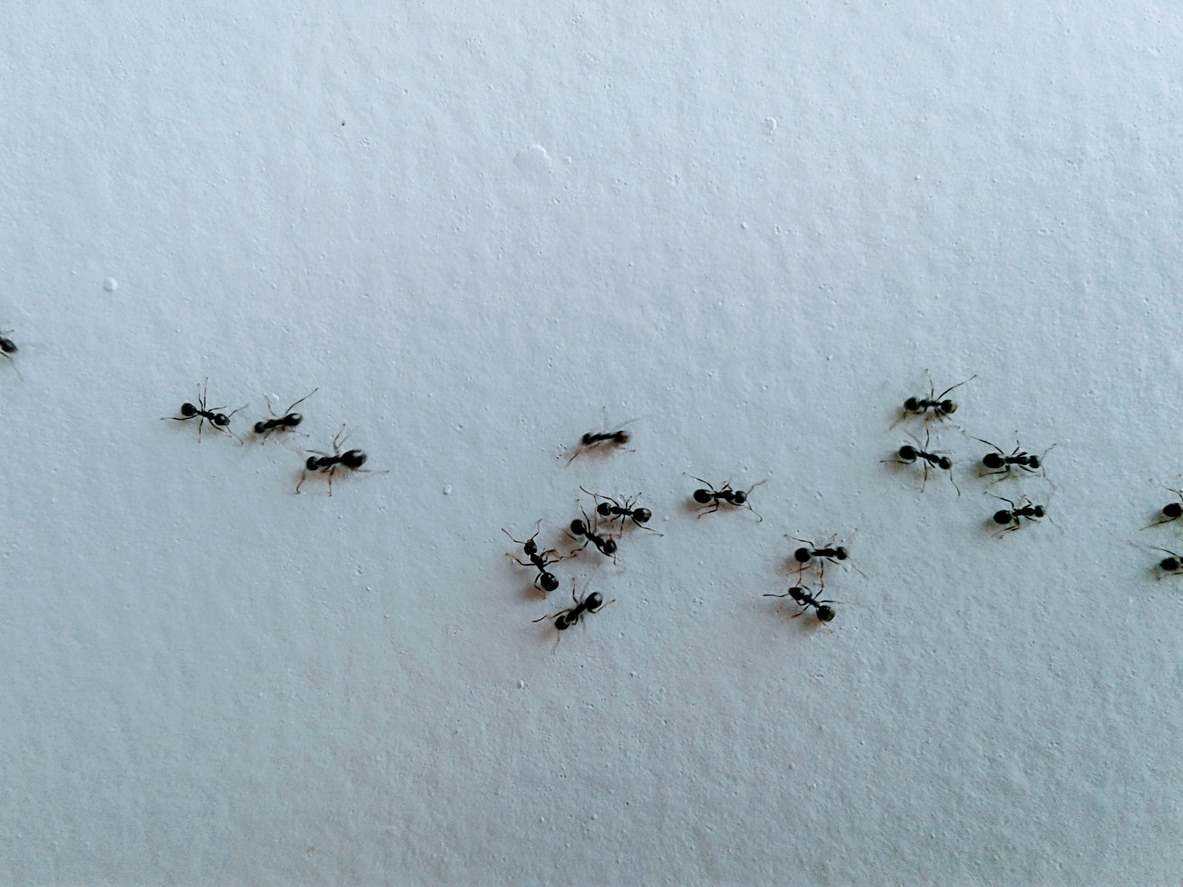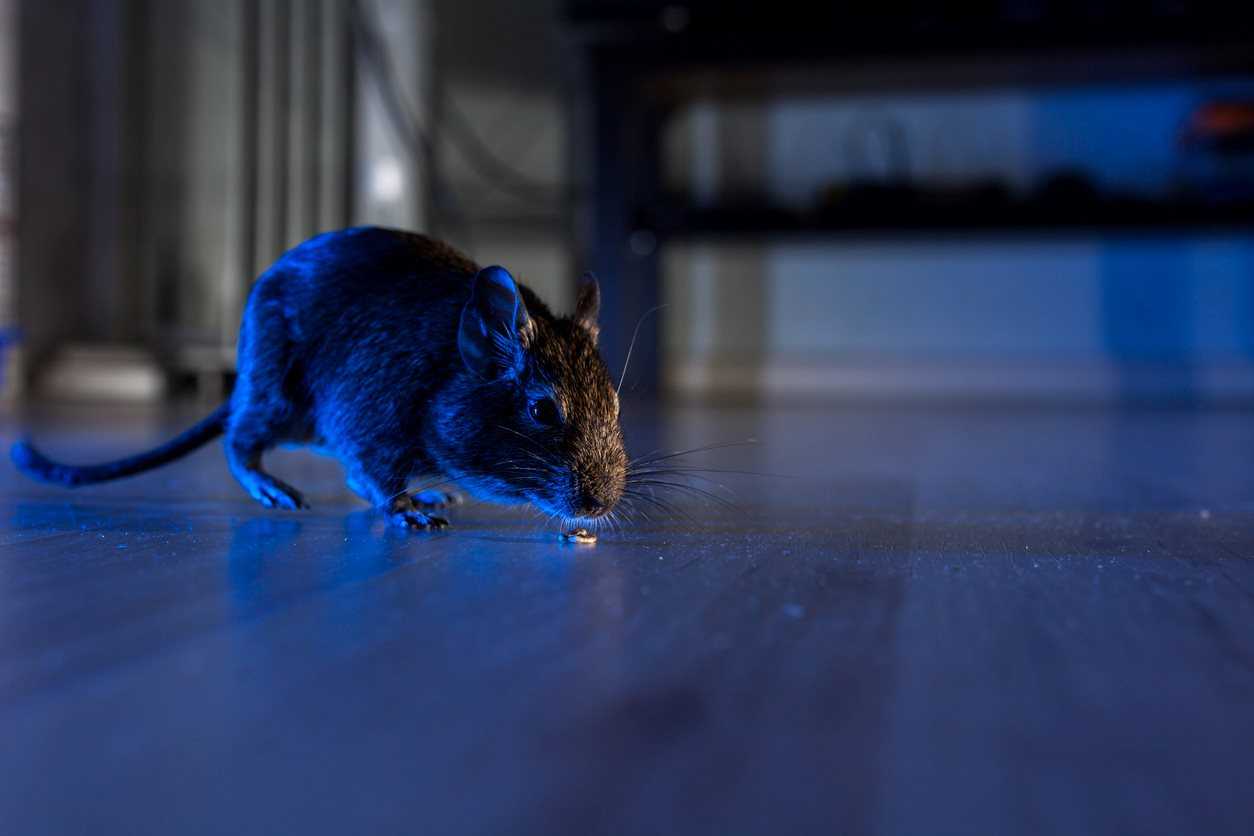Wasp (Vespula germanica)
Treatments for this pest are included in these services:
When something is buzzing in your face, it’s easy to assume it’s a bee. In fact, most people confuse bees and wasps because both have the ability to sting.
While bees are more likely to sting when provoked, wasps are more aggressive and have the ability to both bite and sting a human. In addition, wasps can sting multiple times, whereas a bee will die shortly after stinging. Wasps also are not pollinators and do not produce a product like honey. They have smooth and shiny skin, narrow waists, four wings, and often brightly-colored black and yellow patterns.
Types of Wasps in Arizona
The most common wasps seen around Arizona are paper wasps, but there are three different varieties you may encounter at home. The other two types commonly seen in Arizona are western yellowjackets and tarantula hawks.
Paper Wasp
There are three common paper wasp species in Arizona: the yellow paper wasp, the Navajo paper wasp, and the Arizona paper wasp. Similar to honeybees, these wasps build aerial paper honeycomb nests that are often found on roof overhangs and in ceilings when they set up shop in residential areas. Paper wasps build their nest using cellulose from unpainted wood fences, decks, and railings. To prevent these flying pests from building a nest near your home, keep them from gathering cellulose by treating wood with an insecticidal soap or wood sealer.
Paper wasps do have the ability to sting and will do so when their nests are disturbed. However, when dealing with prey, these wasps will use their powerful mandibles to chew their prey to pieces to feed the larvae. Paper wasp activity generally starts in the spring when a lone queen begins constructing her nest.
Western Yellowjacket
The western yellowjacket is a social, ground-nesting wasp species that uses abandoned rodent burrows, wall voids, and attics as nesting sites. These insects scavenge for meats and sweets and primarily feed on food waste, insects, and spiders. Only the female workers are able to sting but only do so when people or pets threaten the colony. The western yellowjacket is more likely to sting in the summer when natural food sources decline and they are forced to crash picnics in search of food.
Tarantula Hawk
Among the largest wasps, tarantula hawks are solitary in nature and typically feast on tarantulas, but they may also feed on nectar or damaged fruit. These wasps are about 2 inches long with a metallic blue-black body and either blue-black or bright orange wings.
The tarantula hawk is different from most insects because eggs and immature wasps depend completely upon their mothers to provide food. The female wasp paralyzes a tarantula, rather than kills it, to use it as a place to lay her eggs. Once the eggs hatch, the larval wasps feed on the paralyzed tarantula until they are ready to leave the nest.
Tarantula hawks aren’t interested in humans but can be provoked to sting. The pain from the sting is short-lived but has been considered one of the most painful insect stings in North America.
Keep Wasps Away with Stinging Insect Control Services
From a structural standpoint, wasps don’t have the potential to do much damage to your home—but they can pose a significant health risk if you’re attacked, especially for those with an allergy to insect stings. If you’re ready to protect your home from wasps, request a quote from Responsible Pest & Scorpion Control today!




